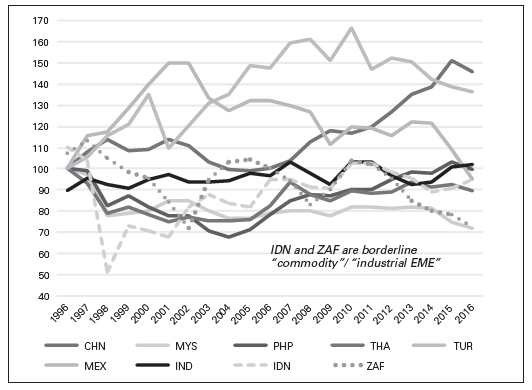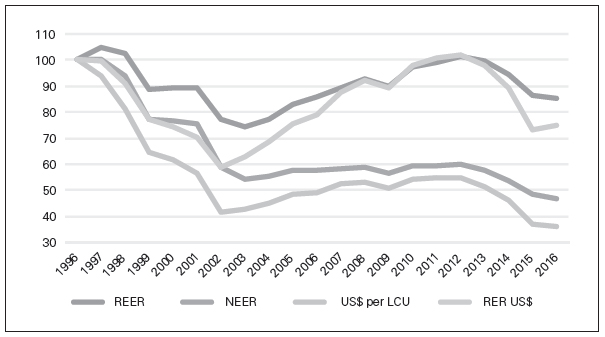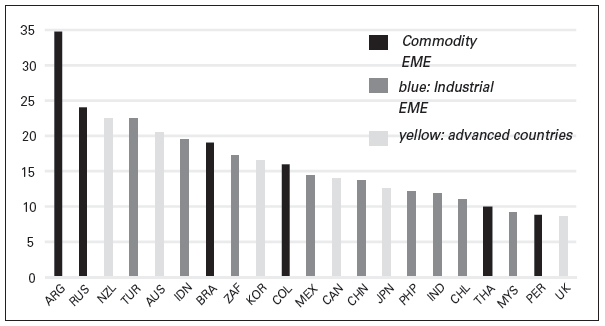ABSTRACT
Previous work has established that an appreciation of the real effective exchange rate (REER) contributes to premature deindustrialization, less productive investment and dependence on commodity booms and busts in emerging markets economies (EME). From the literature, it is less clear, however, what the most important drivers for the cyclical REER movements in EME are. The aim of this study is to provide empirical evidence about the determinants of the REER movements of 15 emerging markets during the last two decades, using statistical analysis and a dynamic panel fixed effects model approach. Our analysis shows that although “commodity” and “industrial” EME are heterogeneous, REER volatility tends to be higher among the former. EME that had more stable REER fared better than those that had a depreciating or appreciating trend (with the notable exception of China). As theoretically expected, commodity prices are an important structural driver of REER movements in “commodity EME”. Moreover, the results confirm the existence of the Harrod-Balassa-Samuelson effect, and show the importance of financial inflows. Further, the interventions of central banks were partially successful to avoid more substantial appreciations (depreciations). Finally, we find that lower country risk and, at least in some periods, growing broad money in OECD countries has led to REER appreciations in our sample countries.
KEYWORDS:
Real exchange rate; foreign exchange rate policy; commodity prices; capital inflows; global risk

 Source: WDI (2019).
Source: WDI (2019).
 Source: WDI (2019).
Source: WDI (2019).
 Source:
Source:  Source:
Source:  Source:
Source:  Source:
Source:  Source:
Source:  Source:
Source:  Source:
Source:  Source: BIS, own calculations.
Source: BIS, own calculations.
 Source: WDI (2019)
Source: WDI (2019)